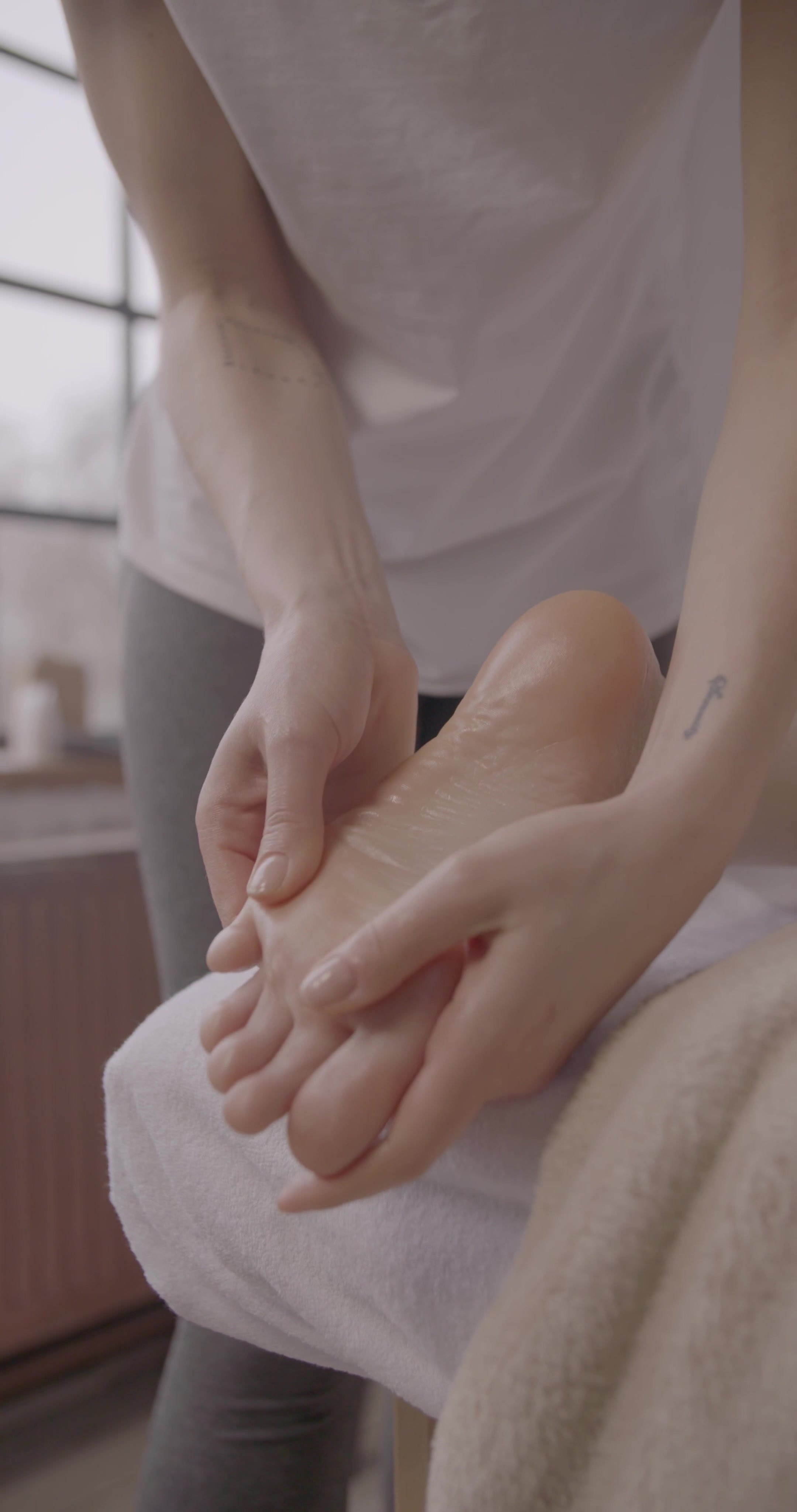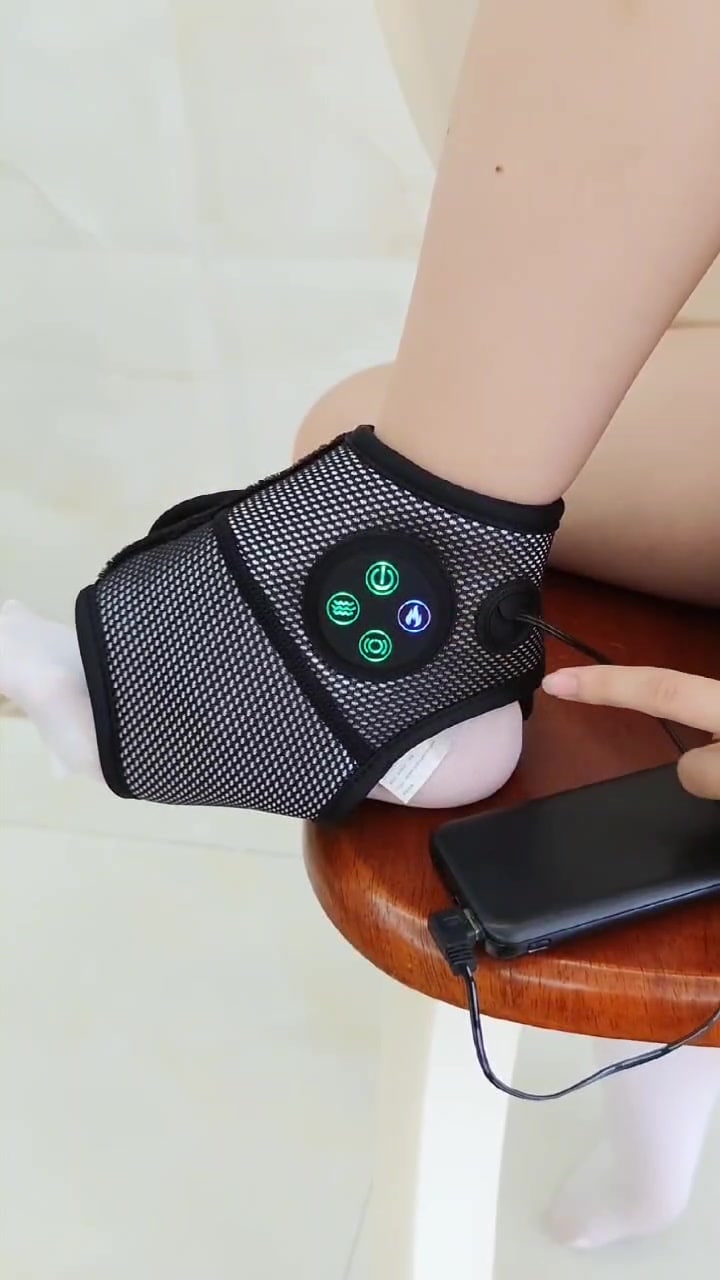Foot Massager: Socks or No Socks? Your Dilemma Decoded
- By Grace
- Updated on
The age-old question of whether to wear socks with your foot massager sparks lively debate among users. Some champion hygiene and protection, while others argue for enhanced sensory experiences. Ultimately, the best approach depends on individual preference and specific use cases, ensuring both comfort and care for your feet.
Hygienic Foot Massage: Why Your Socks Might Be Your Best Friend?
Have you ever wondered if your foot massager is truly clean, especially if multiple family members use it? It’s a valid concern, honestly. As a health product review expert, I’ve seen countless studies emphasizing the importance of hygiene in shared personal care devices. Wearing socks acts as a simple, yet effective, barrier, preventing direct skin contact and the transfer of oils, sweat, and other residues onto the massager's surface. Think of it as a personal, disposable liner for every massage session. For more on maintaining health in your home devices, explore our guide on Home Device Hygiene.
Beyond cleanliness, there’s a surprisingly practical benefit: protection from low-temperature burns. Some advanced foot warmer and massager units can generate considerable warmth for therapeutic purposes. While usually safe, individuals with sensitive skin, neuropathy, or certain medical conditions might find prolonged direct heat uncomfortable or even risk. Socks add a crucial layer of insulation, acting as a gentle buffer against the heat, ensuring your foot massage with socks is always soothing, never scorching.
- When to Sock Up:
- Shared Use: Protects the device and all users from cross-contamination.
- Sensitive Skin: Adds a protective layer against direct friction and heat.
- Cold Feet Therapy: Helps distribute warmth evenly from a foot warmer and massager while preventing direct hot spots.
- Clinical Settings: In professional environments, socks are often mandatory for maintaining stringent hygiene standards.

Unpacking the Sensory Connection to Your Foot Massager
But wait, isn't the point of a foot massager to feel those intricate rollers and soothing vibrations directly? Absolutely! Many users, myself included, find that going barefoot significantly enhances the tactile feedback. Without the fabric barrier, the massager’s nodes, pressure points, and heat elements engage directly with the nerve endings on your soles, offering a more intense and precise sensation. It’s like listening to your favorite music with noise-canceling headphones versus through a thin wall—you just get more detail. Discover other ways to enhance sensory input during relaxation in our Sensory Relaxation Techniques article.
This direct contact is where the magic of a deep tissue foot massage often happens. When your bare feet meet the massager, you get immediate feedback on pressure points, allowing you to shift your weight or adjust settings to target specific areas of tension. Moreover, the enhanced friction between your skin and the massager's surface can often lead to a more effective massage, as the rollers can grip and manipulate the muscles more effectively. You might be surprised to find out just how much a thin sock can dampen the experience!
- The Barefoot Advantage:
- Enhanced Haptic Feedback: Direct contact maximizes nerve stimulation for a richer sensation.
- Precise Pressure Targeting: Allows for better localization of sore spots.
- Improved Friction: Can lead to a deeper, more effective manipulation of foot muscles.
- Full Heat Absorption: For those who crave maximum warmth from their foot warmer and massager, bare feet absorb it most efficiently.
Finding Your Sweet Spot: Tailoring Your Foot Massage with Socks or Without for Ultimate Bliss
So, is there a definitive "right" answer? As a product review expert, I'll tell you this: the best approach often boils down to your personal preference and the specific circumstances. It’s not about choosing a side, but rather understanding when each option serves you best. Perhaps you start your session with socks for warmth from your foot warmer and massager, then slip them off for a more intense, direct massage. Or maybe you always go barefoot unless you're sharing the device.
Think of it as customizing your car. You wouldn't always drive with the windows down, right? Sometimes you want the breeze, sometimes you want the AC. Your foot massager usage is similar! I’ve seen users who swear by thin, moisture-wicking athletic socks, claiming they offer just enough protection without significantly dampening the sensation. Others opt for no socks, but meticulously clean their foot massager after every use. The key is experimentation. What feels incredible for one person, might feel entirely different for another.
- Decision Guide: Socks or No Socks?
- Consider the Device: Some massagers are designed for direct skin contact; others accommodate socks better.
- Your Skin Sensitivity: If you have delicate skin, socks offer protection.
- Desired Intensity: Barefoot offers higher intensity; socks can moderate it.
- Hygiene Habits: How often do you clean your foot massager? Socks reduce the need for constant deep cleaning.
- Warmth Preference: Do you prefer direct heat or diffused warmth?

Your Foot Massager Journey: Expert Tips for Enhanced Comfort and Longevity
Regardless of your sock preference, maximizing your foot massager experience and ensuring its longevity involves a few universal best practices. Firstly, always read your device's user manual. It’s the unsung hero of product usage, offering insights into optimal settings, cleaning instructions, and maintenance tips specific to your model. Secondly, don't overdo it! While a foot massage feels fantastic, prolonged sessions can sometimes lead to soreness, especially if you're new to the device. Most experts recommend sessions lasting between 15-30 minutes.
Also, consider the health of your feet. Are you dealing with specific conditions like plantar fasciitis or neuropathy? In such cases, consulting with a podiatrist or physiotherapist before integrating a foot massager into your routine is paramount. They can provide tailored advice on usage duration, intensity, and whether socks are advisable for your particular needs. After all, your well-being is the cornerstone of quality of life, and getting the most from your health products contributes significantly to that. If you’re curious about specific foot conditions, our Common Foot Ailments Explained offers helpful insights.
- Optimizing Your Experience:
- Start Slow: Begin with shorter sessions and lower intensity, gradually increasing as your feet adapt.
- Hydrate: Drink water before and after your session; foot massage can aid circulation.
- Clean Regularly: Whether you wear socks or not, a clean foot massager is a happy foot massager. Use a damp cloth and mild soap.
- Listen to Your Body: If something feels off, stop. Pain is your body's way of telling you something is wrong.
FAQ about Your Foot Massager Experience
Here, we tackle some of the top concerns users have about their foot massager.
How to use foot massager?
Using a foot massager is generally straightforward: plug it in, place your feet inside (with or without socks, as per your preference), select your desired massage mode and intensity, and relax! Many models offer different settings like shiatsu, rolling, air compression, and heat. Always refer to your specific model's manual for detailed instructions and to explore all its features. Experiment with settings to find what feels best for your feet.
Is foot massage healthy?
Absolutely, a regular foot massage can be incredibly beneficial for your health. It can improve circulation, reduce muscle tension, alleviate pain (especially for conditions like plantar fasciitis), promote relaxation, and even help reduce stress and anxiety. For many, it’s a vital part of a self-care routine, offering a moment of tranquility and rejuvenation. Think of it as a mini-spa treatment right in your living room!
Can a foot massage be harmful?
While generally safe and beneficial, a foot massage can be harmful if not used correct or if you have certain underlying conditions. Overuse, excessive pressure, or using a massager on injured or inflamed areas can exacerbate problems. People with severe neuropathy, deep vein thrombosis, open wounds, fractures, or certain heart conditions should consult a doctor before using a foot massager. Always err on the side of caution and listen to your body; if it hurts, stop immediately.
Ready to dive deeper into optimizing your wellness routine? Download our exclusive "Ultimate Foot Health & Massager Guide" [Resource Download Link]. Discover the perfect foot massager for your needs with our unbiased comparison tool [Tool Usage Link]. And for continuous expert insights and product reviews, subscribe to our monthly newsletter [Subscription Entry Link]—your feet will thank you!




